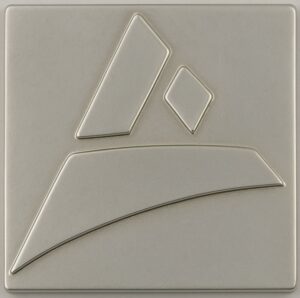
Properties of Platinum
| Color: | Bright white, silvery gray |
| Hardness (Mohs): | ~4.0-4.5 Mohs |
| Melting Point: | 1,783 °C (3215°F) |
| Tensile Strength: | 125 – 200 MPa |
| Density: | ~21.45 g/cm³ |
Why Platinum Is Ideal for Lost Wax Casting
While platinum requires higher casting temperatures than gold or silver, it excels in long-term durability and detail preservation. It is why we graded it the highest score in our article about durability by metal type.
Casting Advantages:
Holds extremely fine detail
Durable and dense: feels substantial
Naturally tarnish-resistant
Hypoallergenic and long-lasting
Considerations:
Due to its high melting point and viscosity, platinum must be cast using a specialized high-temperature furnace (often using inert gas or vacuum pressure). Mold and sprue design must account for its lower flow rate compared to gold alloys.
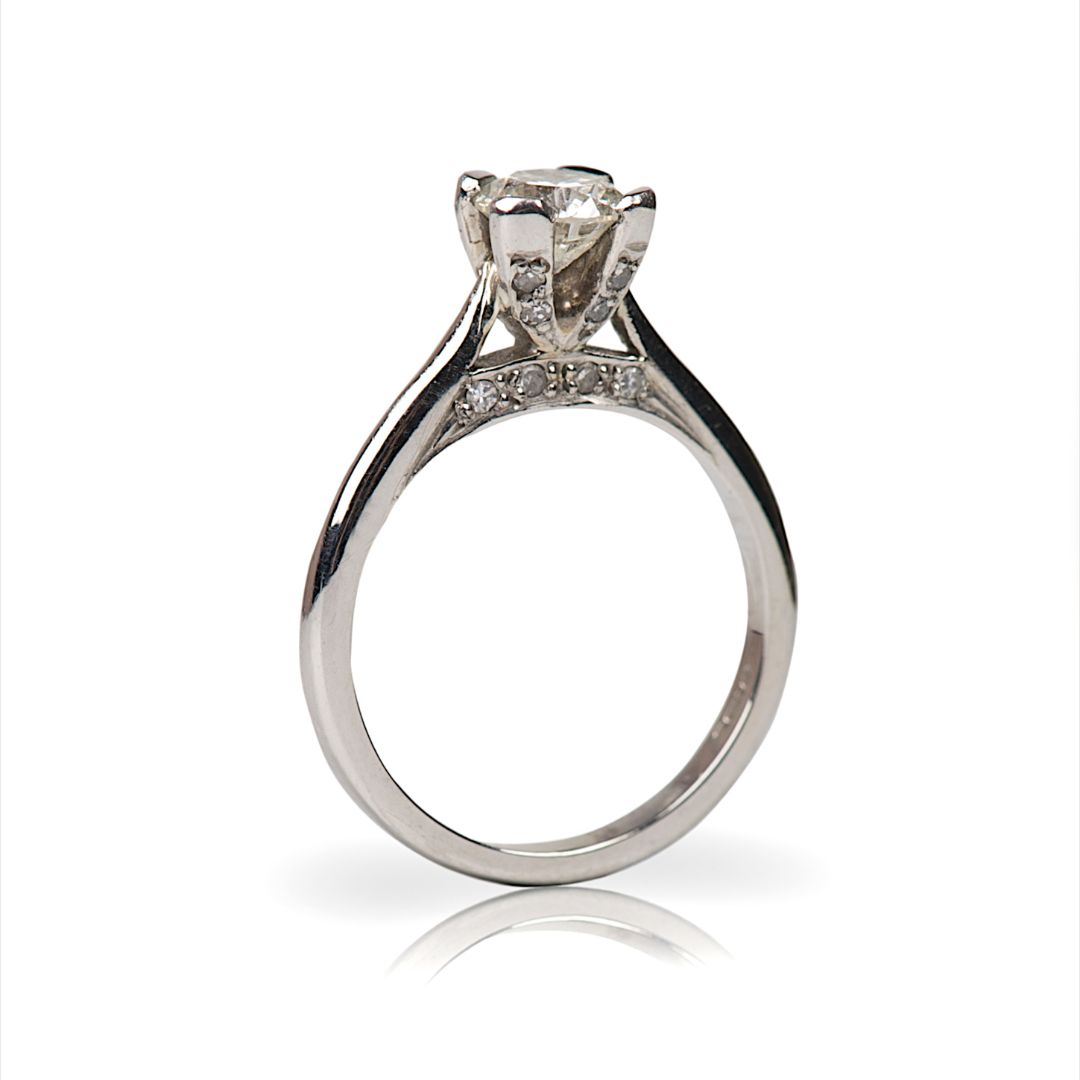
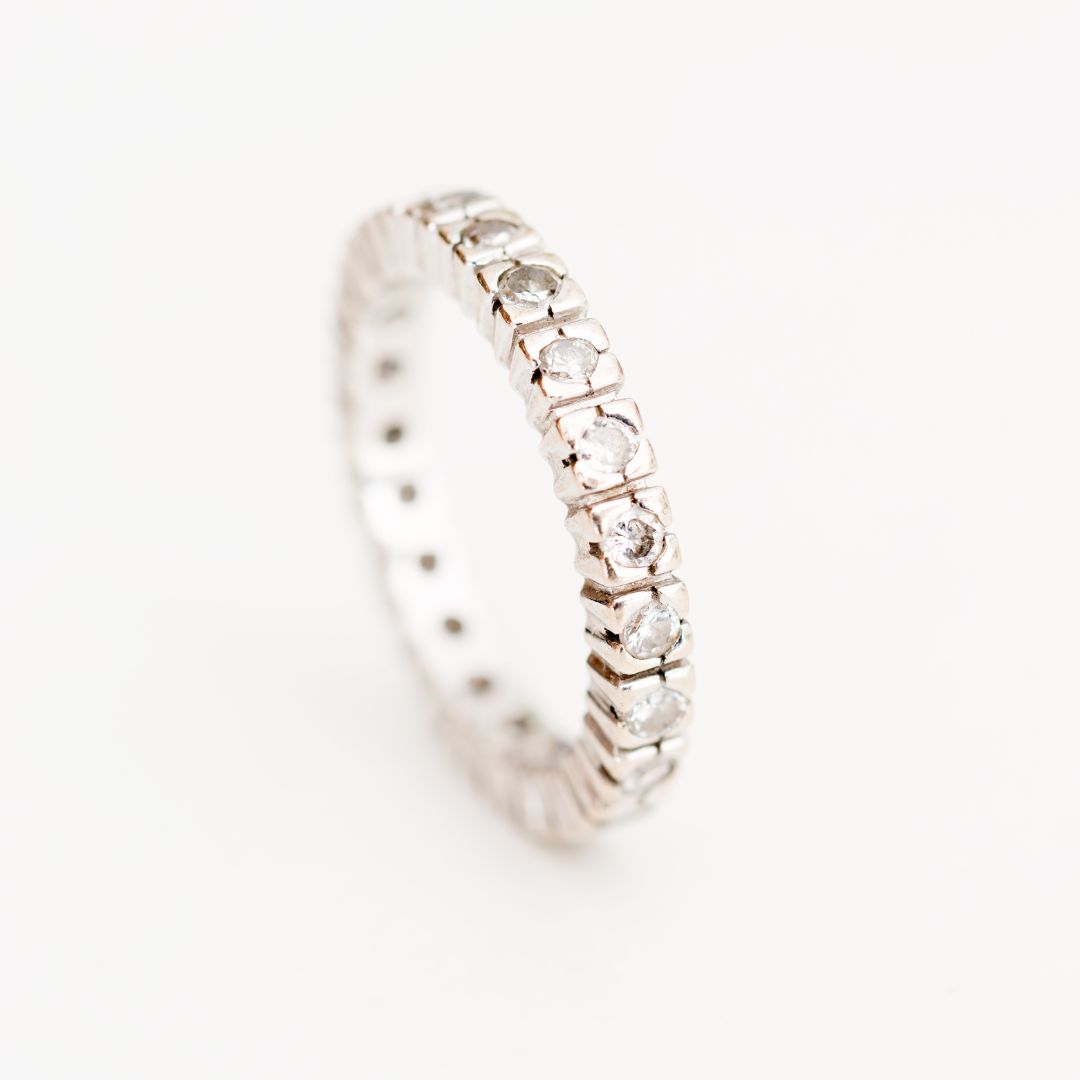
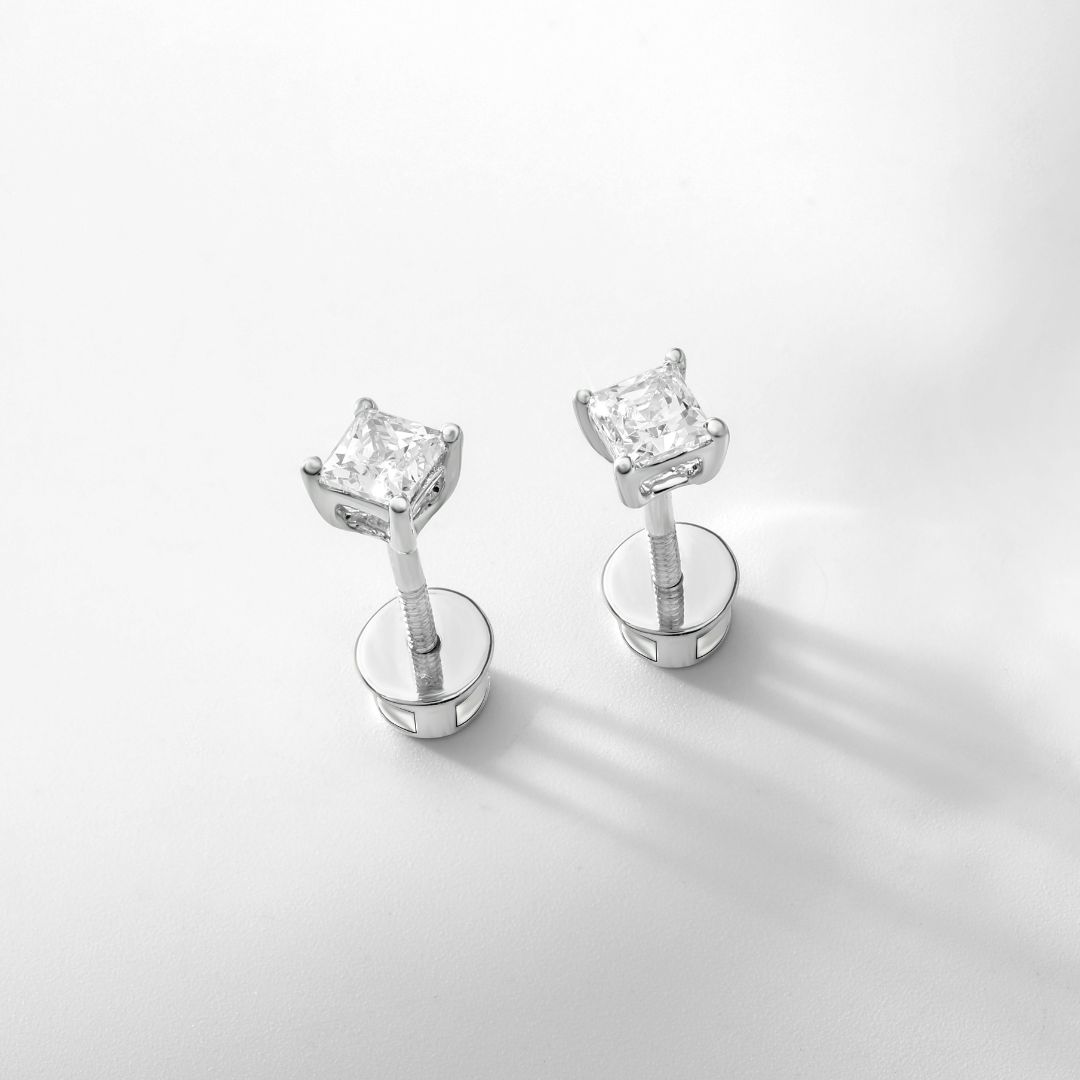
Hardness & Strength
On the Mohs scale, pure platinum is about 4 – 4.5 (harder than pure gold or silver). Jewelry platinum (95% pure) is around Mohs 3.5 according to some sources, and can be work-hardened a bit during polishing. In terms of scratch resistance, platinum is somewhat paradoxical: it is a tough metal, but not a super hard one. For example, 14K white gold (with nickel) can be harder than platinum and thus might resist scratches a bit better on the surface. Platinum will scratch with daily wear. However, and importantly, when platinum scratches, it tends to displace rather than lose material. The metal is so dense and cohesive that it doesn’t chip off easily; it just moves. This is why an old platinum ring can be buffed and essentially all the metal is still there (just redistributed). By contrast, when gold or silver are scratched, tiny bits of metal are often actually removed (wearing away over time). So, platinum scratches but maintains mass. This is why jewelers say platinum prongs holding a diamond are safer long-term: even if they scratch or bend a bit, the prong is still nearly all there, whereas a gold prong might have microscopically worn away more and eventually thin out. In short: Platinum is not scratch-proof – expect scuffs – but it is extremely durable against deformation and metal loss. It’s a heavy, solid metal that stands up to wear in the long run.
Corrosion & Tarnish
Platinum does not tarnish or oxidize in normal conditions. It’s an extremely noble metal, meaning it’s chemically inert for jewelry purposes. It won’t rust, it won’t turn your skin colors, and it won’t react even to acids that might dissolve other metals (platinum requires very strong mixed acids to corrode it). So a platinum piece can be worn in the shower, ocean, or wherever. It will emerge basically the same (just maybe with soap residue which you can wash off). It also doesn’t discolor over time: its natural color is a cool grayish white and it stays that way. (White gold, by comparison, can slightly yellow with age as its rhodium plating wears or its alloys oxidize; platinum stays white). You might hear about a “platinum patina”. This refers to the subtle frosted look platinum gets from many tiny scratches over years. Some people love this patina (it gives an antique, lived-in feel and a soft glow). Others prefer to have their platinum re-polished to mirror shine periodically. Either way, this patina is not tarnish, just wear. Importantly, platinum is hypoallergenic and inert: it won’t cause or react with skin issues (more on that next). Platinum’s corrosion resistance is so high that even in harsh environments it holds up (for instance, platinum labware is used in chemistry because it doesn’t react or corrode).
Hypoallergenic?
Platinum is one of the safest metals for sensitive skin. 950 platinum is 95% pure, and the 5% alloying metals are usually also non-allergenic (like other platinum-group metals). It contains no nickel, so that major allergen is absent. Jewelers often call platinum truly hypoallergenic: it’s the metal recommended if someone has skin reactions to other jewelry. In fact, platinum is used in medical implants due to its biocompatibility. One note: some platinum alloys use 5% cobalt, while cobalt can cause allergies in some contexts. The cobalt in platinum alloy is bound up and not in direct contact in the same way, and instances of reaction are very uncommon. Still, if someone is extremely metal-sensitive, they can seek platinum alloys that use e.g. iridium or ruthenium instead of cobalt just to be extra safe. Overall, for clients with metal allergies, platinum is often the top recommendation. They can wear it daily with no issues.
Everyday Use
A well-made platinum ring or jewelry piece can truly last a lifetime and beyond. It’s common to reset diamonds into platinum prongs for heirloom pieces because of platinum’s lasting security. For everyday wear, expect a platinum ring to get a bit matte from scratches (the patina), but not to wear thin. For example, a comparison often cited: if you had a 18K gold wedding band and a platinum wedding band and wore them 24/7 for 30 years, the gold band will likely have lost a noticeable amount of metal mass (through polishing, tiny gold rubbed off, etc.), whereas the platinum band will be nearly the same weight as when it started. Platinum’s density and “staying power” make it ideal for jewelry that you want to hand down through generations. On the flip side, platinum’s heaviness and cost make it less common for very large pieces. For example, big platinum earrings would be heavy to wear, and a huge platinum chain would cost a fortune. So platinum is mostly used in rings, bridal jewelry, and fine small pieces rather than oversized fashion items.
Care & Maintenance
Cleaning: Use warm water, mild dish soap, and a soft brush. Dry with a microfiber cloth. Avoid chlorine-based cleaners (though platinum resists them better than gold).
Polishing: Platinum can be professionally polished to remove patina or scratches. Frequent polishing is not harmful: it doesn’t wear away like softer metals.
Storage: Store separately from softer metals to avoid scratching them. Use soft pouches or individual compartments.
- Every few years, you may choose to have your platinum jewelry professionally refinished to restore its shine and form.
Design & Casting
Platinum is famously difficult to cast compared to other jewelry metals. Its melting point is around 1768 °C (3215 °F), almost double that of gold (~1064 °C) or silver (~962 °C). This means special equipment (like induction melters or oxy-hydrogen torches and ceramic crucibles) is required. Also, investment the plaster mold for platinum casting must withstand higher temperatures (often a different investment powder is used). Platinum also must often be cast in a vacuum or controlled environment because at high temperatures it can absorb gases which cause porosity. In short, not every jewelry caster can handle platinum: it’s a specialized process. Gladly, at Castimize we can.🙏
Platinum shrinks a bit upon solidification, but generally reproduces fine details well if the casting is done correctly. The finishing of platinum also requires different tools. For instance, files and abrasives used on platinum wear faster because platinum is tough. Polishing platinum is a separate process (often requiring distinct polishing compounds). As a designer, you don’t necessarily need to know all the casting tech details, but it’s good to be aware: platinum casting will be more expensive and have slightly different design rules. For example, extremely thin sections might not cast as well in platinum because the metal cools so fast; sprues (channels for metal in casting) need to be larger to accommodate platinum’s behavior. Many platinum castings are done a tad thicker to ensure structural integrity and complete filling.
Designer Tip 💡
Use platinum for high-end designs that warrant its properties, like engagement ring settings, heirloom-quality pieces, or designs requiring very fine but strong details (e.g. platinum can hold very delicate prongs/claws for gemstones without breaking, more so than gold). Since platinum is expensive and heavy, design efficiently: you might undercut or hollow out large sections from underneath to reduce weight (many platinum rings have slightly thinner or scooped-out interiors to make them lighter and more affordable, while keeping external appearance the same). You can go a bit thinner on certain elements compared to softer metals, e.g. prongs and filigree can be made finer because platinum is less likely to snap. Still, avoid knife-edge thinness to be safe. Embrace the platinum patina: consider satin or matte finishes that complement the naturally developing patina (a high polish will turn matte with wear anyway, so sometimes starting with a brushed finish is practical). If a mirror polish is desired, inform clients they can repolish every so often to maintain it. As for casting design, ensure uniform thickness where possible to avoid sections that might prematurely cool. Also remember platinum’s density: very large solid pieces might become uncomfortably heavy, so you might design large pendants or earrings in an openwork style to cut down weight.
Finishing tip: Hand-engraving or milgrain on platinum is more labor-intensive (platinum is tough), but yields gorgeous results that also last (platinum details don’t wear down as quickly). In summary, platinum is the ultimate choice for durability and purity: use it in designs that justify its premium.
Platinum Finishes Available at Castimize
We offer a selection of platinum finishes to match your aesthetic and design vision:
Natural Platinum: A soft, matte finish that highlights raw casting texture
Polished Platinum: High-gloss reflective surface, hand-finished
Ready to create in Platinum? Upload your 3D Design
Custom metal casting in gold, silver & more.
High quality, fair prices, worldwide shipping. 🌍
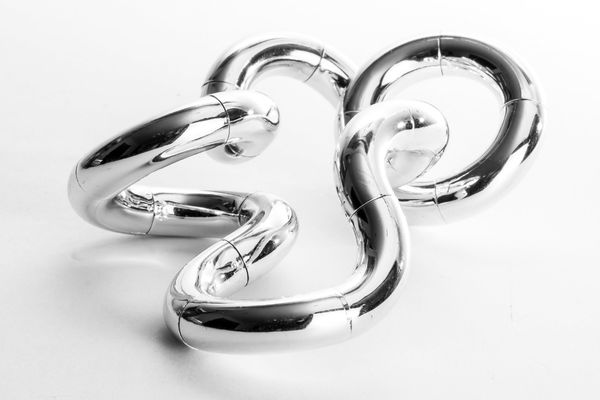
FAQ
Is platinum better than white gold for jewelry?
Yes, in many cases. Platinum is more durable over time, naturally white (no need for rhodium plating), and hypoallergenic. It’s especially favored for engagement rings or heirloom pieces. However, it’s heavier and more expensive than white gold, so the best choice depends on budget and use.
Does platinum tarnish or change color?
No. Platinum does not tarnish or oxidize. It may develop a matte patina over time from surface wear, but this is not discoloration, it’s just a change in texture. A quick professional polish will restore its original shine.
Is platinum suitable for daily wear?
Absolutely. Platinum is one of the most durable and skin-safe metals used in jewelry. It’s an ideal material for everyday rings, pendants, or bracelets. Especially for pieces that will be worn for decades.
Why is platinum more expensive than gold?
Platinum is rarer in the earth’s crust, denser (so more weight per piece), and harder to work with due to its high melting point. These factors contribute to a higher raw material and labor cost. That said, its longevity and durability often make it a worthwhile long-term investment.
Can platinum jewelry be resized or repaired?
Yes, but it requires a jeweler experienced with platinum. Due to its high melting point and hardness, platinum needs specialized tools and techniques for repairs or adjustments. Most professional jewelers are equipped to handle it.
Is platinum heavier than other metals?
Yes. Platinum is about 60% heavier than 14K gold and nearly twice as dense as silver. A ring in platinum will feel more substantial on the finger. Some customers love this luxurious weight; others prefer lighter metals for comfort.
Explore Materials
- Gold Casting Guide
- Silver Casting Guide
- Brass Casting Guide
- Bronze Casting Guide
- Plated Brass Guide
- Platinum Casting Guide

